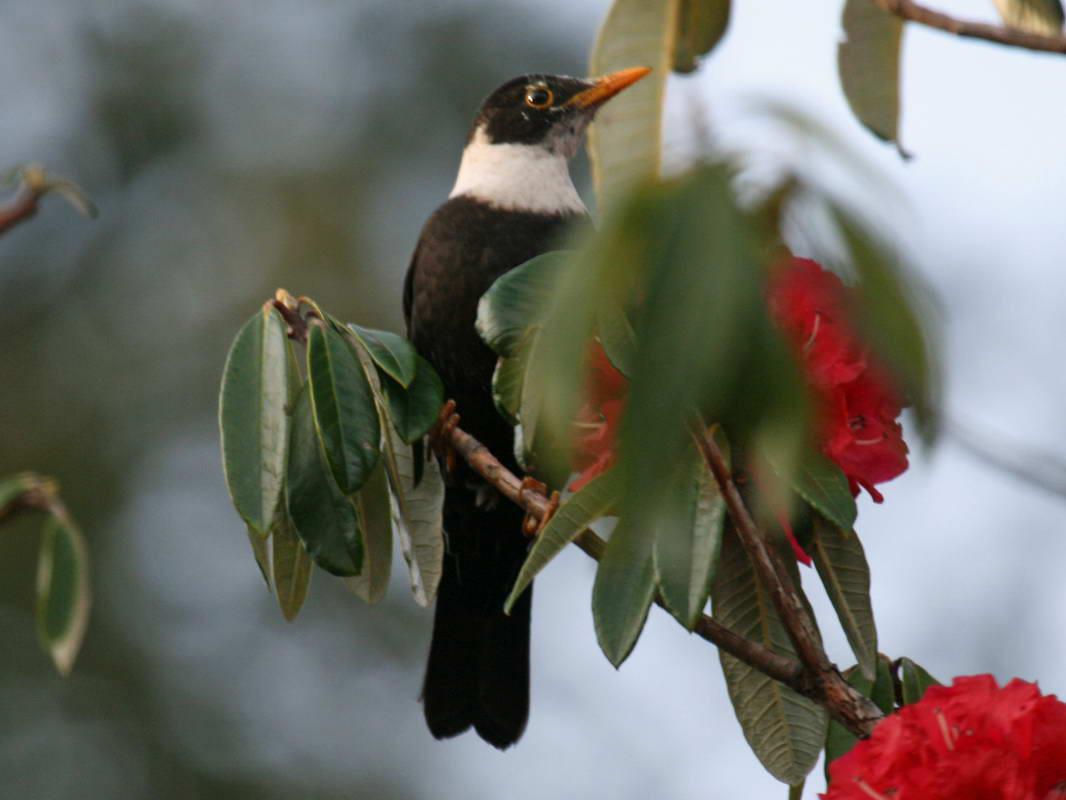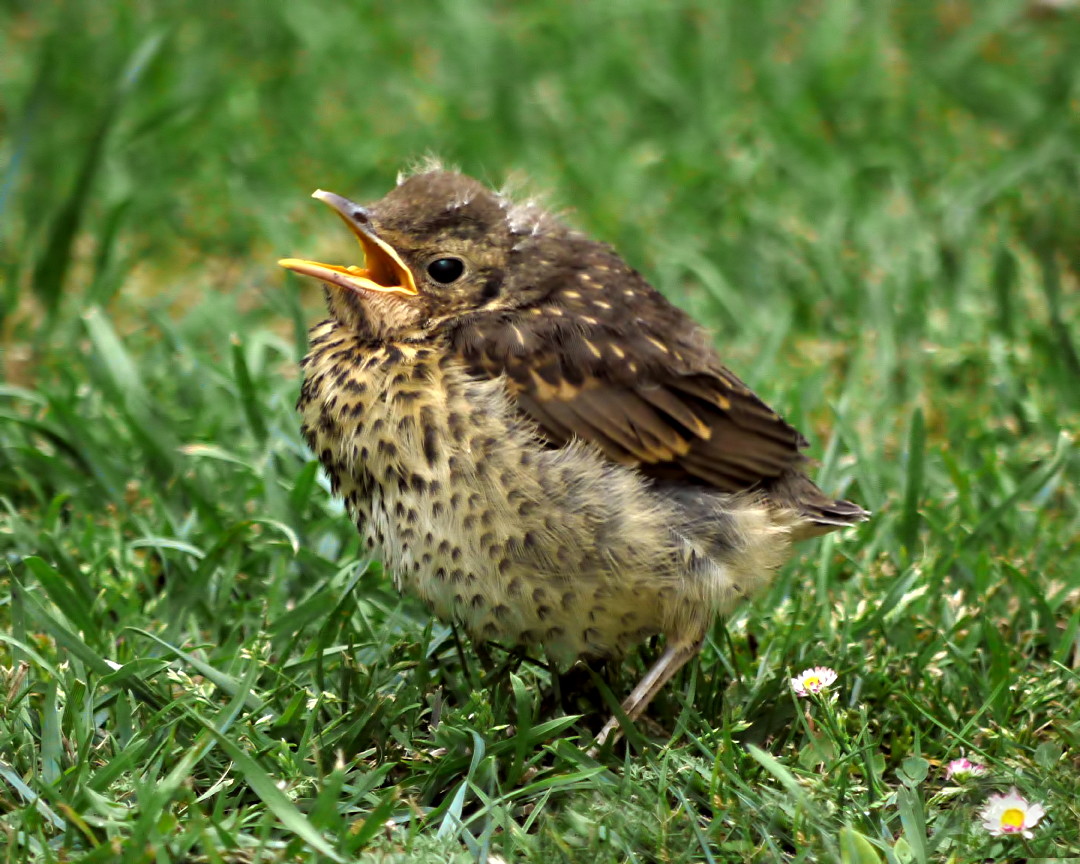|
Old World Blackbirds
''Turdus'' is a genus of medium-sized mostly insectivorous or omnivorous birds in the wider thrush family, Thrush (bird), Turdidae. The genus name ''Turdus'' is Latin for 'thrush'. Most of the species are called thrushes; the term thrush (other), thrush is also used for many other birds in the family Turdidae, as well as for a few species belonging to other families. Some Old World species with fully or largely black plumage are called blackbirds, and one, the ring ouzel, still retains the Old English name ouzel, which, until the 17th century, was also used (as "black ouzel") for the common blackbird; it is cognate with the German name :de:Amsel, Amsel for the same species. Some New World species are called robins, the best known of which is the American robin. Two other species have their own distinct names without "thrush", fieldfare and redwing, derived from behavioural characteristics and plumage features, respectively. The genus has a cosmopolitan distribution, with ... [...More Info...] [...Related Items...] OR: [Wikipedia] [Google] [Baidu] |
Mistle Thrush
The mistle thrush (''Turdus viscivorus'') is a bird common to much of Europe, Palearctic, temperate Asia and North Africa. It is a year-round resident in a large part of its range, but northern and eastern populations bird migration, migrate south for the winter, often in small flocks. It is a large Thrush (bird), thrush with pale grey-brown upper parts, a greyish-white chin and throat, and black spots on its pale yellow and off-white under parts. The sexes are similar in plumage, and its three subspecies show only minimal differences. The male has a loud, far-carrying song which is delivered even in wet and windy weather, earning the bird the old name of stormcock. Historically, the name was also sometimes spelled "missel thrush". Found in open woods, parks, hedges and cultivated land, the mistle thrush feeds on a wide variety of invertebrates, seeds and berries. Its preferred fruit include those of Viscum album, mistletoe, Ilex aquifolium, holly, Sorbus aucuparia, rowan, and ... [...More Info...] [...Related Items...] OR: [Wikipedia] [Google] [Baidu] |
Cosmopolitan Distribution
In biogeography, a cosmopolitan distribution is the range of a taxon that extends across most or all of the surface of the Earth, in appropriate habitats; most cosmopolitan species are known to be highly adaptable to a range of climatic and environmental conditions, though this is not always so. Killer whales ( orcas) are among the most well-known cosmopolitan species on the planet, as they maintain several different resident and transient (migratory) populations in every major oceanic body on Earth, from the Arctic Circle to Antarctica and every coastal and open-water region in-between. Such a taxon (usually a species) is said to have a ''cosmopolitan'' distribution, or exhibit cosmopolitanism, as a species; another example, the rock dove (commonly referred to as a ' pigeon'), in addition to having been bred domestically for centuries, now occurs in most urban areas around the world. The extreme opposite of a cosmopolitan species is an endemic (native) species, or one foun ... [...More Info...] [...Related Items...] OR: [Wikipedia] [Google] [Baidu] |
Omnivore
An omnivore () is an animal that regularly consumes significant quantities of both plant and animal matter. Obtaining energy and nutrients from plant and animal matter, omnivores digest carbohydrates, protein, fat, and fiber, and metabolize the nutrients and energy of the sources absorbed. Often, they have the ability to incorporate food sources such as algae, fungi, and bacteria into their diet. Omnivores come from diverse backgrounds that often independently evolved sophisticated consumption capabilities. For instance, dogs evolved from primarily carnivorous organisms (Carnivora) while pigs evolved from primarily herbivorous organisms (Artiodactyla). Despite this, physical characteristics such as tooth morphology may be reliable indicators of diet in mammals, with such morphological adaptation having been observed in bears. The variety of different animals that are classified as omnivores can be placed into further sub-categories depending on their feeding behaviors. Frug ... [...More Info...] [...Related Items...] OR: [Wikipedia] [Google] [Baidu] |
Red-throated Thrush
The red-throated thrush (''Turdus ruficollis'') is a passerine bird in the thrush family. It is sometimes regarded as one subspecies of a polytypic species, "dark-throated thrush", black-throated thrush then being the other subspecies. More recent treatments regard the two as separate species. The scientific name comes from Latin. ''Turdus'' is "thrush" and the specific ''ruficollis'' is derived from ''rufus'', "red", and ''collum'', "neck". The red-throated thrush is a migratory Palearctic species. It breeds in East Siberia to North Manchuria wintering to West China, Myanmar, and Northeast India. Its range overlaps with the more westerly-breeding black-throated thrush. It is a large thrush with a plain grey back and reddish underwings. The adult male has a red throat. Females and young birds lack the bib, but have black-streaked underparts. This bird species is a very rare vagrant to western Europe Europe is a continent located entirely in the Northern Hemisphere and ... [...More Info...] [...Related Items...] OR: [Wikipedia] [Google] [Baidu] |
Grey-backed Thrush
The grey-backed thrush (''Turdus hortulorum'') is a species of bird in the family Turdidae. It breeds in northeastern China and the Russian Far East and winters in southern China and northern Vietnam. Its natural habitat is temperate forests. A captive bred pair laid five eggs, which hatched 14 days after the first egg was laid. The young left the nest 12 days later. Description The grey-backed thrush is a medium-sized Passerine A passerine () is any bird of the order Passeriformes (; from Latin 'sparrow' and '-shaped') which includes more than half of all bird species. Sometimes known as perching birds, passerines generally have an anisodactyl arrangement of their .... It is a sexually-dimorphic species, with males having a slate grey back and chest and white chin and belly, with rufous flanks. Females have grey or brown backs, with dark spots on the chest and similar plumage to males on the belly and flanks. These birds are 20-23 cm long, and weigh a mean 66.7 g (r ... [...More Info...] [...Related Items...] OR: [Wikipedia] [Google] [Baidu] |
White-collared Blackbird
The white-collared blackbird (''Turdus albocinctus'') is a species of bird in the family Turdidae. It can be found throughout the Indian subcontinent, ranging across Bangladesh, Bhutan, India, Myanmar, Nepal and Pakistan. Its natural habitats are subtropical or tropical moist montane forests and subtropical or tropical high-altitude shrubland Shrubland, scrubland, scrub, brush, or bush is a plant community characterized by vegetation dominance (ecology), dominated by shrubs, often also including grasses, herbaceous plant, herbs, and geophytes. Shrubland may either occur naturally o .... On the Tibetan Plateau White-collared Blackbirds can breed twice a year. The first breeding attempt results in small clutches where a few nestlings fledge in high body condition. Contrasting with the second attempt where larger clutches result in more chicks fledgling but these are in lower body condition. These differences are thought to be driven by parental feeding behaviour and season ... [...More Info...] [...Related Items...] OR: [Wikipedia] [Google] [Baidu] |
Glossy-black Thrush
The glossy-black thrush (''Turdus serranus'') is a species of bird in the family Turdidae. It is found from northern Venezuela to northwestern Argentina. Its natural habitat is subtropical or tropical moist montane forest Montane ecosystems are found on the slopes of mountains. The alpine climate in these regions strongly affects the ecosystem because temperatures lapse rate, fall as elevation increases, causing the ecosystem to stratify. This stratification is ...s at high elevations. References glossy-black thrush Birds of the Northern Andes glossy-black thrush Taxonomy articles created by Polbot {{Turdidae-stub ... [...More Info...] [...Related Items...] OR: [Wikipedia] [Google] [Baidu] |
Black-billed Thrush
The black-billed thrush (''Turdus ignobilis'') is a bird in the family Turdidae native to Colombia and also scantily distributed across Venezuela, the Guiana Shield and the western Amazon. Distribution and habitat The species is the most common ''Turdus'' thrush of disturbed habitats in western Amazonia and on the Guianan Shield, occurring in Brazil, Colombia, Ecuador, Peru, Venezuela, and Bolivia. It inhabits a variety of habitats including clearings, savannas with gallery woodland, cerrado The Cerrado () is a vast ecoregion of Tropics, tropical savanna in central Brazil, being present in the states of Goiás, Mato Grosso do Sul, Mato Grosso, Tocantins, Maranhão, Piauí, Bahia, Minas Gerais, São Paulo (state), São Paulo, Paraná ..., humid forest borders, coffee plantations, and various other habitats under anthropogenic influence. Ecology The black-billed thrush feeds on terrestrial invertebrates (beetles and flies, worms, crickets and caterpillars) as well as berr ... [...More Info...] [...Related Items...] OR: [Wikipedia] [Google] [Baidu] |
Clay-colored Thrush
The clay-colored thrush (''Turdus grayi'') is a common Middle American bird of the thrush family (Turdidae). It is the national bird of Costa Rica, where it is well known as the ''yigüirro'' ( Spanish: ). Other common names include clay-colored robin. Distribution and habitat It ranges from South Texas (where it is rapidly expanding its range) to northern Colombia. West and north of the Isthmus of Tehuantepec, it is limited to the Atlantic slope, except for a population around Oaxaca City, Mexico that probably originates from escaped cage birds. In much of its range it is familiar in yards and gardens, similar to some other thrushes such as the American robin, the Eurasian blackbird, and the song thrush. Description In general appearance and habits it resembles other ''Turdus'' thrushes such as the American robin. It is about the same length or slightly smaller: , and weighs on average. The plumage is brownish, somewhat lighter below than above, lightest on the flank ... [...More Info...] [...Related Items...] OR: [Wikipedia] [Google] [Baidu] |
Song Thrush
The song thrush (''Turdus philomelos'') is a Thrush (bird), thrush that breeds across the West Palearctic. It has brown upper-parts and black-spotted cream or buff underparts and has four recognised subspecies. Its distinctive Birdsong, song, which has repeated musical phrases, has frequently been referred to in poetry. The song thrush breeds in forests, gardens and parks, and is partially bird migration, migratory with many birds wintering in southern Europe, North Africa and the Middle East; it has also been introduced into New Zealand and Australia. Although it is not threatened globally, there have been serious population declines in parts of Europe, possibly due to changes in farming practices. The song thrush builds a neat mud-lined bird nest#Cup, cup nest in a bush or tree and lays four to five dark-spotted blue bird egg, eggs. It is omnivorous and has the habit of using a favourite stone as an "anvil" on which to break open the shells of land snail, snails. Like other p ... [...More Info...] [...Related Items...] OR: [Wikipedia] [Google] [Baidu] |
Mistle Thrush
The mistle thrush (''Turdus viscivorus'') is a bird common to much of Europe, Palearctic, temperate Asia and North Africa. It is a year-round resident in a large part of its range, but northern and eastern populations bird migration, migrate south for the winter, often in small flocks. It is a large Thrush (bird), thrush with pale grey-brown upper parts, a greyish-white chin and throat, and black spots on its pale yellow and off-white under parts. The sexes are similar in plumage, and its three subspecies show only minimal differences. The male has a loud, far-carrying song which is delivered even in wet and windy weather, earning the bird the old name of stormcock. Historically, the name was also sometimes spelled "missel thrush". Found in open woods, parks, hedges and cultivated land, the mistle thrush feeds on a wide variety of invertebrates, seeds and berries. Its preferred fruit include those of Viscum album, mistletoe, Ilex aquifolium, holly, Sorbus aucuparia, rowan, and ... [...More Info...] [...Related Items...] OR: [Wikipedia] [Google] [Baidu] |







